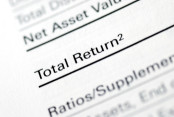
Explore This Integrated Utility Stock with Strong 3.90% Yield

How This Aerospace & Defense Stock Can Diversify Your Equity Portfolio and Boost Your Dividends

Diversify Your Equity Portfolio with this Low-Beta, High-Yield Integrated Utilities Stock
$29.94
+1.29%
$65.13 B
7.01%
$2.10
16.93%
$25.77
03/29
2022
4.2
Last: 4.2
$45.52
+0.82%
$8.45 B
5.10%
$2.32
8.43%
$42.25
04/09
2024
4.2
Last: 4.2
$45.46
+0.82%
$71.08 B
4.31%
$1.96
5.89%
$43.78
04/02
2024
4.4
Last: 4.4
$47.64
+1.34%
$10.91 B
4.28%
$2.04
5.08%
$41.72
05/28
2024
3.8
Last: 3.8
$157.84
+0.19%
$283.98 B
4.13%
$6.52
6.12%
$181.83
10/31
2022
4.9
Last: 4.9
$142.50
+1.70%
$16.79 B
4.13%
$5.88
10.21%
$136.93
09/19
2023
3.8
Last: 3.8
$83.73
+0.49%
$25.82 B
3.99%
$3.34
1.35%
$90.37
06/08
2023
4.0
Last: 4.0
$108.03
+0.44%
$82.67 B
3.87%
$4.18
14.28%
$95.64
03/20
2024
4.2
Last: 4.2
$96.45
+0.64%
$49.36 B
3.65%
$3.52
20.52%
$84.98
06/22
2023
4.2
Last: 4.2
$31.33
+0.80%
$13.70 B
3.38%
$1.06
19.13%
$26.03
02/21
2024
4.2
Last: 4.2
$42.27
+1.05%
$28.22 B
3.31%
$1.40
23.61%
$36.17
03/26
2024
4.2
Last: 4.2
$117.33
-0.09%
$447.18 B
3.24%
$3.80
17.05%
$104.00
11/14
2023
4.9
Last: 4.9
$172.75
+1.01%
$228.40 B
3.14%
$5.42
0.56%
$181.54
10/31
2022
4.1
Last: 4.1
$122.68
+1.87%
$116.36 B
3.13%
$3.84
-8.20%
$133.52
01/09
2024
3.2
Last: 3.4
$53.71
+1.96%
$7.12 B
2.76%
$1.48
1.51%
$53.11
03/05
2024
3.9
Last: 3.9
$187.10
+1.40%
$9.15 B
2.72%
$5.08
2.00%
$175.09
08/09
2023
3.3
Last: 3.3
$524.80
+0.65%
$120.28 B
2.40%
$12.60
16.67%
$345.55
12/14
2021
4.6
Last: 4.6
$856.20
+2.35%
$125.52 B
2.38%
$20.40
4.37%
$698.79
09/05
2023
4.4
Last: 4.4
$169.11
+1.32%
$393.25 B
2.38%
$4.03
16.81%
$144.27
07/26
2022
4.3
Last: 4.3
$202.74
+0.14%
$141.55 B
2.13%
$4.32
2.97%
$115.85
12/30
2016
4.1
Last: 4.1
$290.40
-0.20%
$80.79 B
1.96%
$5.68
13.77%
$225.48
08/08
2022
4.5
Last: 4.5
Best Dividend Stocks Model Portfolio
Are you looking for the best dividend stocks?
Beat the savings rate and boost retirement income.
Use our best dividend stock picks.
Save the headache and rely on the +$300k/year we spend on research.
How we find the best dividend stocks.
Only the best dividend stocks are considered for the portfolio.
How the portfolio is setup to pay the best dividends.
Targeting a mix of income and returns.
You Also Get These Features With Dividend.com Premium
What Premium Members Are Saying
“Subscribing to Dividend.com has completely transformed my investment perspective. The simple advice and daily emails are a great reminder that investments have a long term horizon and that dividends are where our wealth can be accumulated. Excellent work!”
David, Chicopee, MA
“This is my second year with Dividend.com, and my portfolio has risen to an all time high, in spite of volitility and global uncertainty. The daily newsletter gives a nice overview of current market conditions. I especially appreciate “My Watchlist”, where I can find dividend yields, ex-div days and the next payout information.”
Mike K., Sacramento, CA
“I always check out your take on any Dividend Stocks I invest in. I like your rating system a lot. So far it hasn’t steered me wrong. You really seem to care and want your customers to succeed. Paul seems to have a good handle on the market and sense for the pitfalls involved.”
Robert Emerick, Northbrook, IL





